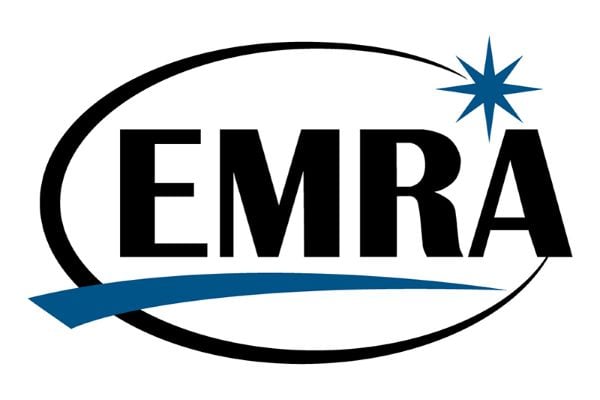The 60 Second Patient Assessment in Trauma
Whether you are a bystander when an accident occurs, or working in the ED when a Trauma Alert is called, a quick, thorough patient assessment is the essential first step in effective patient management. Unfortunately, in the melee of an emergency, the people responsible for patient care tend to focus on obvious injury and lose sight of the big picture. It is important to have a systematic way to approach trauma patients, to ensure that nothing is missed.
Emergency Department Trauma Exam
Primary Survey (15 seconds) - The question to be answered is, "Does this patient have any problem that will endanger their life in the next few minutes?
- Obtain a complete report from EMS (Once they are gone, you lose all connection with the accident scene, so get all the information you may need)
- Maintain spinal immobilization until cleared.
- A - Airway – Assess for patency/obstruction. Open airway with jaw thrust if necessary. If the patient can talk, it is probably clear. Have suction and intubation supplies ready. Be prepared to relieve obstruction (i.e. Crichothyrotomy)
- B - Breathing – Yes or no? If not, begin ventilating (Bag Mask Ventilation) with 100% oxygen. This can oxygenate the patient and buy time during intubation attempts. Assess breath sounds if possible. Are they bilateral? If not consider pneumothorax and attempt needle decompression. Stabilize flail chest.
- C – Circulation - Are there pulses? Radial, Femoral, Carotid. Is capillary refill less than 2 seconds? Is there any obvious bleeding needing immediate control?
- D - Deformity – Are there obvious injuries?
- E - Exposure – Remove the patient's clothing quickly. Then cover the patient with warm blankets. Hypothermia in trauma is common. All patients must have all of their clothing removed.
- Vitals - Pulse, blood pressure, respirations, temperature (core), and pulse ox.
Secondary Survey (45 seconds) - The goal of the secondary survey is to identify all of the patient's injuries. This starts at the head and works down to the feet, including the entire body surface. (In parentheses is why the particular part of the exam is important.)
- Head - Palpate the head and feel for any crepitation or step-off (a step-off deeper than the thickness of the skull is a neurosurgical emergency).
- Eyes - Pupillary response to light (Altered response may be a sign of brain injury or toxicologic emergencies). Look for bruising around the eyes, so-called “Raccoon eyes” (may indicate basilar skull fracture).
- Ears - Is there any fluid draining out? (If it is clear, it is CSF until proven otherwise.) Look in the canals. (Blood behind the tympanic membrane is a basilar skull fracture until proven otherwise). Is there any bruising around the ears? (Battle's sign of basilar skull fracture).
- Nose - Is there any trauma or is there any fluid draining? (Again, clear fluid is CSF until…)
- Throat - Is there any oral trauma (Blood and broken teeth are serious airway hazards)
- Neck - Deformity or tenderness? JVD? (Cardiac tamponade). Subcutaneous air? (Pneumothorax or airway injury) Is the trachea midline? (Tension pneumothorax) Palpate carotid pulses.
- Chest - Any chest wall tenderness, paradoxical movement (Flail chest), subcutaneous air? Consider chest tubes if indicated.
- Lungs - Are breath sounds present and equal?
- Cardiac - Are the sounds muffled? (Cardiac tamponade)
- Abdomen - Tenderness, rigidity, guarding? (Hemoperitoneum)
- Back - Don't ever forget- all patients must be rolled, using spinal precautions if necessary. Any injury, tenderness, or deformity?
- Genitals - Blood from the urethra? (Urinary tract injury)
- Rectal - Blood? (GI injury) In males, is there a "high-riding prostate?" (urethral injury) Is sphincter tone normal? (Spinal injury) There are only 2 reasons for a medical student not to do a rectal exam: The student has no finger or the patient has no rectum.
- Upper extremities - Pulse, movement, sensation intact? Are pulses equal? (Aortic injury - especially in rapid deceleration accidents)
- Lower extremities - Pulse, movement sensation intact?
Traumatic Emergencies in the Field (No equipment available)
Primary Survey (15 seconds) - Does the patient have a life-threatening emergency that requires immediate attention?
- Scene safety - Overzealous rescuers (a.k.a. Ricky Rescue) will get hurt. The field is an inherently dangerous place. YOUR SAFETY COMES FIRST, THEN THE PATIENT'S! If you get hurt, then your patient is even worse off than before. If the patient is in an unsafe place, then move them to a safe one BEFORE beginning your assessment. Send someone to contact EMS, and then have them report back to you; you will know that it was done, and you will have extra hands available.
- Mechanism of Injury - Unlike working in the ED, where the patient is seen 20-30 minutes after injury, serious injuries that have just occurred may not present themselves immediately. You need to consider the mechanism to evaluate the risk of serious injury.
- Manual in-line stabilization of the spine.
- Airway - Same as above. Don't forget your jaw thrust maneuver (if C-Spine injury is possible) or the old-fashioned head tilt/chin lift. Insert Oral Airway.
- Breathing - Are they or are they not? Ascultate breath sounds. Apply oxygen.
- Circulation - Do they have a pulse? Are they bleeding out? (Remember: Pressure, Elevate, Pressure points, Tourniquet)
Secondary Exam - (45 seconds) What are the patient's injuries?
- Vitals - Pulses, BP (Palpable radial pulse = systolic of 80, Palpable brachial pulse = systolic of 70, Palpable carotid pulse = systolic of 60), Respirations, Level of Consciousness. HEENT (Head, Eyes, Ears, Nose, Throat)
- Palpate the head
- Check papillary response. In the daylight, cover the patient's eyes and then uncover them.
- Ears - Drainage or Battle's sign?
- Nose - Trauma or drainage?
- Throat - Oral trauma?
- Neck - Is the trachea midline? JVD? Carotid pulses? Subcutaneous air?
- Chest - Any chest wall tenderness or paradoxical movement?
- Abdomen - Tenderness or guarding?
- Extremities - Deformities? Pulse, movement, sensation intact?
Use the pneumonic DCAP-BTLS to guide assessment: Deformities, Contusions, Abrasions, Punctures/Penetration, Burns, Tenderness, Laceration, Swelling.
If time permits obtain a AMPLE history from family or bystanders.. Allergies, Medications, Past Medical History, Last oral intake, Events leading to present
Report findings to EMS - If you do not, then your exam was wasted. You are not to leave your patient until either EMS arrives or a higher medical authority relieves you.
Best of luck, and always remember that if you get confused during your survey, or don't know why the patient is crashing, start your exam all over again. It's only going to take a minute and may save their life.
Clayton Kazan, MS IV
Chicago Medical School
EMRA Medical Student Committee
Edited/Reviewed: 1/09
Baruch Fertel, MSIV
NYU School of Medicine
EMRA Medical Student Council





